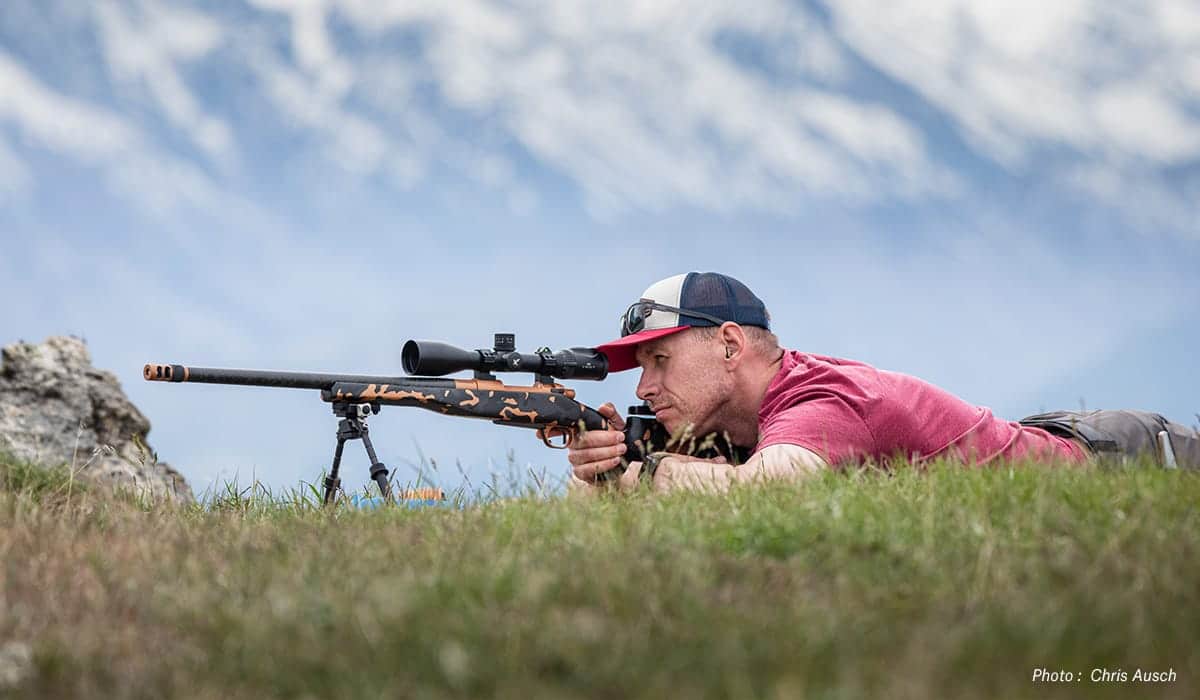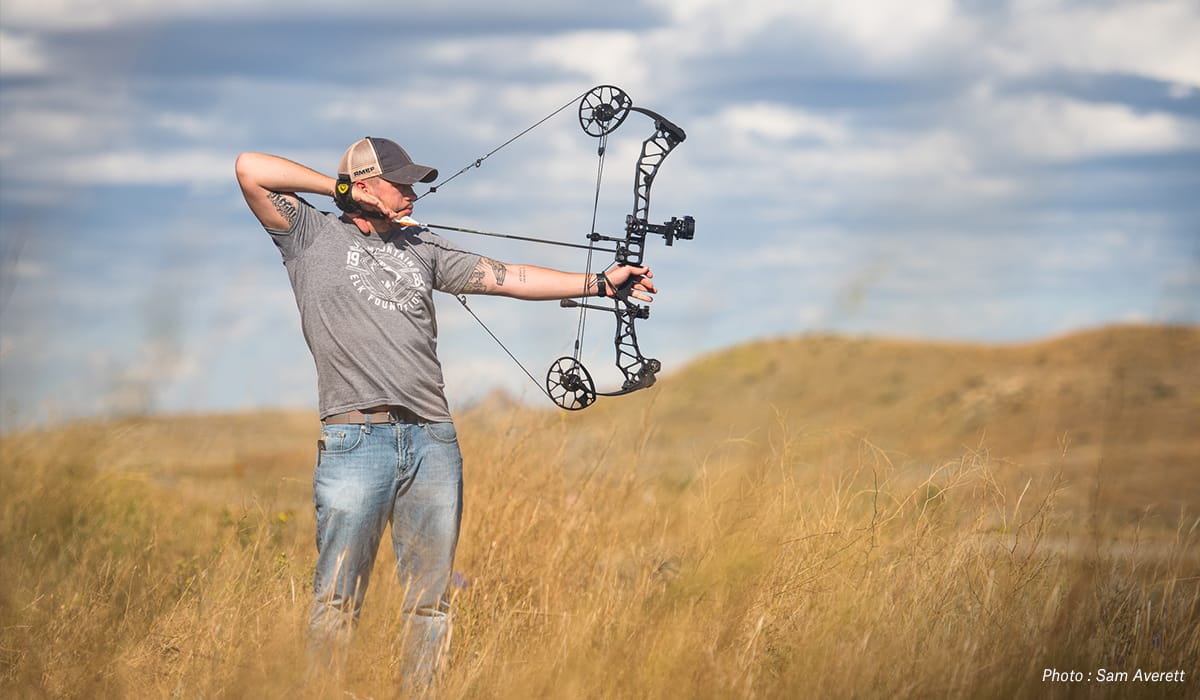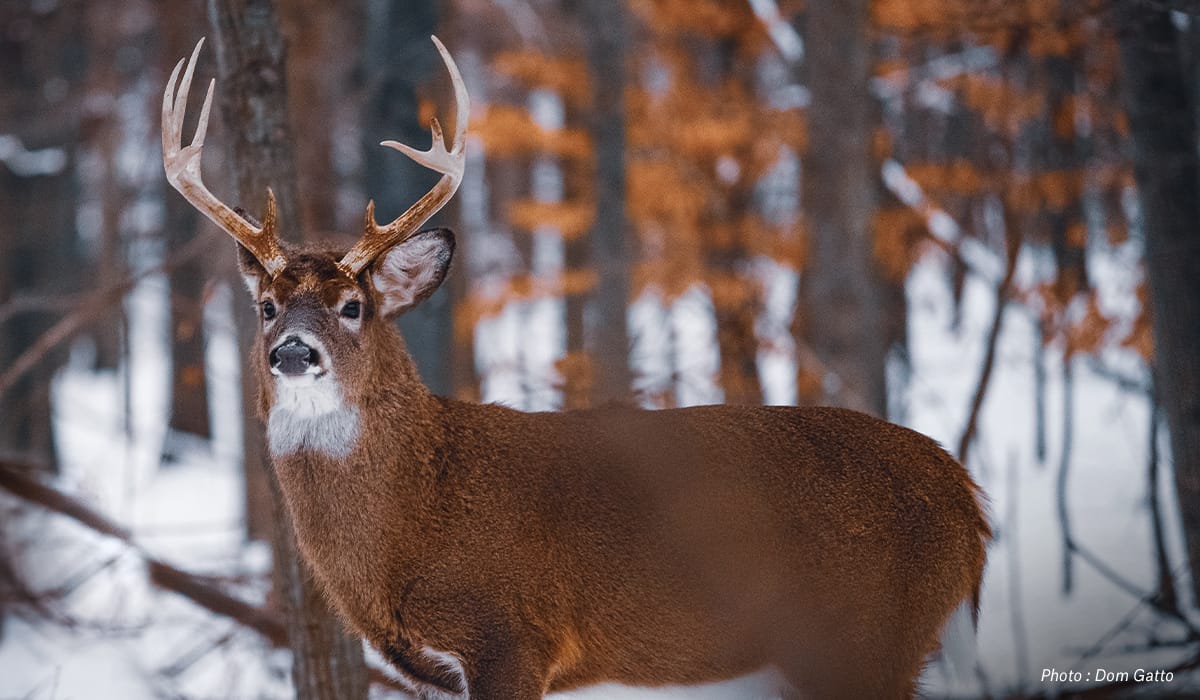The first defining question all new hunters must answer is whether to begin as a gun hunter or bowhunter. Though many end up hunting with both weapons, new hunters should focus on having some mastery of one before they add the other. Here we explore the limits and realities of each class of weapon so you can decide for yourself. Guns versus bowhunting, you get to choose.
Let’s start with a few basic parameters. For the sake of argument, we’ll assume the new hunter is looking at hunting big game, which includes anything from whitetail deer to moose. This means we won’t be covering shotguns for upland birds or waterfowl, or smaller-caliber guns for small game (squirrels, gophers, rabbits, etc.).
For bowhunting, we will assume the bow to be a compound bow, forgoing traditional bows (longbows and recurve bows), and we won’t discuss crossbows. The choice will be framed around choosing a rifle or a modern compound bow, as each is a capable, versatile weapon that will open many doors into the world of hunting. Each of these top-level weapons will also give the new hunter a foundation on which to expand into the aforementioned variations needed for other types and styles of hunting.
The criteria for this discussion of gun hunting versus bowhunting will include types and lengths of seasons, regulations for each weapon, costs (both weapon costs and ammunition, etc.), learning curve, practice needs, and general maintenance.

A Case for Rifle Hunting
Most of us can recall Ralphie’s most-wanted present from “A Christmas Story,” “a Red Ryder carbine-action, two-hundred shot range model air rifle.” From childhood on, a gun for a would-be hunter was a rite of passage, graduating them from the backyard, makeshift bow and arrows to something more permanent, something to be passed down from generation to generation.
That’s the mystique of gun ownership and gun hunting. For practical purposes, rifle hunting appeals to new hunters because it’s the centerpiece of “going hunting.” With a sighted-in gun capable of long-range shooting, there’s an opportunity to grab-your-gun-and-go. You don’t have to have the latest scent-control camouflage, mastery of game calls, or ninja-like stalking skills. You can roam along game trails, hillsides, or open meadows, or sit still under a big tree and wait for big game.
Learning to safely handle and shoot a gun is also a paramount lesson in personal responsibility. The skill it requires to carry, load, and shoot isn’t taken lightly; it’s practiced. For adult-onset hunters, it’s the meat of what’s taught in required hunter safety courses. For those who learned as children, mastering safe handling skills is what earned us trust to shoot bigger guns as we grew into them.
Rightly or wrongly, rifle hunting is assumed to be “easier” than bowhunting. You’ll find hunters eager to argue either side, but there is a simplicity, of sorts, to gun hunting and that might appeal to new hunters. Perhaps this simplicity is why 76% of bowhunters also hunt with rifles.
However, one of the bigger downsides of only hunting with a rifle is the short, limited seasons for this weapon and increased hunting pressure. In states like Ohio and Illinois, rifle hunting is limited to a handful of days over a couple different weekends. That’s a lot of pressure in not a lot of time.
Let’s look at the pros and cons of getting started hunting with a rifle so you can make your own call.
Pros of Rifle Hunting
- Ability to harvest game at longer distances (between 50-300 yards).
- With practice, scopes allow for pinpoint shot placement.
- A powerful weapon that takes down big game more easily.
- Less physically demanding to shoot than typical bows.
- Requires less time to develop skills.
Cons of Rifle Hunting
- Must have land or gun ranges for practicing (up to 200 yards minimum).
- More restricted on some hunting districts.
- Typically shorter seasons.
- Must draw special tags for most antlerless deer or elk hunting opportunities.
- Ammunition is expensive and a recurring cost.
- Risk of more damaged meat, or losing meat to lead exposure.
The Basic Cost of Rifle Hunting*
- Average cost of a new mid-level, big game gun (.30/06, .243, .270, .300, 7mm) is between $750-$1,500+.
- Mid-level scope averages $500, but experienced hunters say the scope should cost as least as much as the rifle, if not more.
- One box of 20 cartridges averages $60.
- Gun cleaning kit and trigger lock are around $75.
- (Optional) gun safe will run between $400 and $1,500, depending on size and features.
- Blaze orange clothing can be $20 to $100.
*No doubt that COVID has increased the cost associated with gun ownership. With high demand and limited production of guns and ammunition, sourcing a new rifle and boxes of shells will require more money and searching than needed historically.

A Case for Bowhunting
There’s beauty in simplicity and often greater reward for increased effort. That’s part of the appeal for many archery hunters. Quietly stalking a bull elk or mature buck and silently knocking an arrow a mere 30 yards from an animal on high alert is thrilling. Add to this that bow hunting has longer historical significance than any firearm and you can see the appeal bowhunting might have to a new hunter.
Similar to Ralphie’s obsession with guns, more than a handful of kids have likely fashioned their own bows and arrows with shoelaces and carved sticks. Whether taking aim at stuffed animals or fictitious tigers and lions, watching an arrow take flight and hitting its mark triggers lifelong excitement.
Of the notable drawbacks to bowhunting, and it occurs more times than we wish, is not mortally wounding (or not recovering) a deer or elk with our bow. A shoulder shot with a rifle will take down a big animal, but not making a heart or double-lung shot with an arrow could mean that animal takes off for hundreds of yards and you losing track of it.
On the other hand, shooting a bow opens us up to the non-hunting side of the sport of archery. We can shoot bows just for fun or in local competitions (often billed as 3D archery shoots) more readily than we can with firearms.
Let’s dive a little deeper into archery hunting to see the pros, cons, and costs.
Pros of Bowhunting
- Longer hunting seasons, on average. Plus, earlier and later seasons than gun hunting.
- In Western states, archery seasons overlap peak elk rut.
- Do not need a lot of room to practice.
- Do not need to keep buying boxes of shells for practice and hunting. Arrows are reusable.
- Bowhunting opens up access to more than big game. Turkey, bear, and grouse can be taken with the same bow.
- In many states, antlerless game can be taken with over-the-counter tags.
- Cleaner kills when we make them. No risk of damaged or lead-exposed meat.
- Special access to hunting units in some states (including inside city limits, along river bottoms, or near developed areas) since the effective range of bowhunting is much smaller than with guns.
Cons of Bowhunting
- Getting close to big game can be difficult. Odds of success might be lower for newer hunters. Most game will be taken between 10-50 yards.
- Things wear out more quickly. Strings need replacement every few years and parts break.
- Especially in the South, archery season can be hot, so extra care preserving game meat must be taken.
- Most rutting activity for deer takes place well after early archery seasons.
- Requires a certain amount of physical ability to draw a bow.
The Basic Cost of Bowhunting
- Average cost of a new mid-level, compound bow is between $750-$1,250.
- Pin sight, stabilizer, release up to $500 for all.
- Arrows run about $75-$150 per dozen.
- Broadheads for arrows average $15 each.
- Practice targets run $50 to several hundred dollars (from square blocks to 3D targets).
- (Optional) High-end, scent-blocker camouflage can be up to $1,000 for a full set of camouflage clothing.

Choose Your Weapon for Hunting
It’s a hard choice, isn’t it? There really is no clear case for one over the other. It’s going to come down to personal preference, access to places to shoot (both for practice and hunting), local regulations, availability of mentors, your budget, level of commitment, and your hunting goals.
For a little more guidance, though, the benefits of starting with a rifle are having a better chance at filling your freezer within the first few years of hunting, and with success comes the passion to keep at it. You’ll have a weapon you can pass on to your kids. A gun might be easier for you to shoot. Once you learn how to safely handle a firearm and have competency with your shooting ability, the door will be open to shotguns and other firearms that allow you to hunt birds and other game.
The reasons to start as a bowhunter are because you’re in it for the challenge, you appreciate the traditional method of hunting, and you want the exercise. Perhaps you’ll want to learn game calls in order to bring in big animals within range. You’ll have more days to hunt and potentially less competition from other hunters. It’s quiet, and just the practice of practicing your bow is calming.
Still not sure? Try them both. Find people who will take you to the gun range for a day. Talk to your local archery store and try to sling some arrows. Scout the land around you and find out which tags line up with your life’s schedule better.
When you decide, reach out to us on Facebook or Instagram and let us know what you picked. Good luck out there.